Mindfulness
With life’s constant demands, practicing mindfulness can help reduce stress and enhance both physical and mental well-being. Some simple mindfulness practices include journaling, eating slower during one meal, or pausing to notice your surroundings. Mindfulness can also benefit your exercise routine.
For example, when lifting weights, focus on your breathing, the muscles being used, and your body’s movement patterns. Similarly, during endurance exercises like running, pay attention to your foot placement and breathing rhythm. These practices enhance the connection between your mind and body, increasing the effectiveness of your workouts.
Allow your body to guide you—take rest days when needed. Listening to your body helps you recover and perform better. Start with just a few mindful moments every day.
Hydration
Water is crucial for maintaining good health. Dehydration can lead to headaches, cramps, irritability, and reduced stamina. While hydration calculators can estimate your daily needs, remember to account for additional fluids lost during exercise.
Be sure to hydrate before, during, and after a workout. When you're not exercising, drink water when you're thirsty and include foods rich in electrolytes, such as bananas, oranges, watermelon, or spinach. Finding a water bottle that fits into cupholders and is easy to carry ensures you stay hydrated on the go.
Morning Sunlight
Viewing natural sunlight in the morning after waking is a simple way to start your day. Exposure to sunlight helps set your circadian clock, causing a small cortisol spike that boosts alertness and regulates your sleep schedule.
While it’s essential to get natural sunlight, avoid looking directly at the sun to protect your eyes. Limiting blue light exposure before bed also supports better sleep by reducing nighttime cortisol spikes.
 Daily Movement
Daily Movement
Any type of movement, when done safely, is beneficial. Small changes like stretching for 10 minutes in the morning or doing squats and lunges between meetings can add up. If time is tight, consider starting a monthly fitness challenge at work to encourage yourself and coworkers to stay active.
Whether you’re new to the gym or looking to try something fresh, NIFS offers a variety of group fitness classes, from boxing and yoga to TRX and spin. For a personalized approach, take advantage of NIFS’ free Functional Movement Screening for members to learn about your mobility and limitations.
Kick off 2025 on the right track with NIFS! Unleash your inner strength with our Powerlifting Program, designed for all experience levels! Whether you're a beginner or a seasoned lifter, you'll gain expert guidance to improve your technique, build strength, and smash your goals. Sign up today and take the first step toward lifting with confidence and skill!


.jpg?width=391&height=347&name=GettyImages-1261754581(2).jpg) The Cornerstone of Nutrition: Caloric Intake
The Cornerstone of Nutrition: Caloric Intake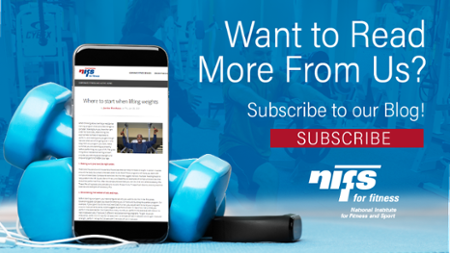
 Sometimes you might think you’re doing the right things (or at least not really wrong things) when it comes to healthy eating. But those habitual behaviors might actually cause you to consume more food and calories.
Sometimes you might think you’re doing the right things (or at least not really wrong things) when it comes to healthy eating. But those habitual behaviors might actually cause you to consume more food and calories. Vacation is supposed to be fun, enjoyable, and relaxing. When it comes to weight loss attempts or making healthy choices in general, however, traveling can be a challenge. Here are some of our RD’s best tips for healthy eating when traveling or on vacation.
Vacation is supposed to be fun, enjoyable, and relaxing. When it comes to weight loss attempts or making healthy choices in general, however, traveling can be a challenge. Here are some of our RD’s best tips for healthy eating when traveling or on vacation.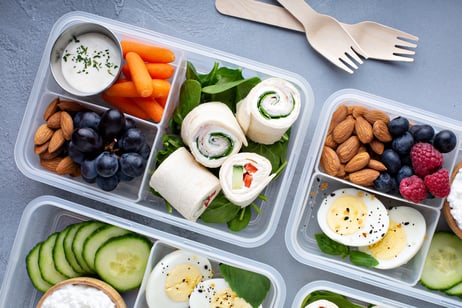
 Personal trainers are people, too (well, at least when no one is looking!). In reality, there are a lot of new bridges we, as a society, are crossing every single day. As a trainer, my goal is to put all my effort into making sure that my clients are being healthy with fitness and wellness as a priority. With the lockdown upon us, finding new ways to get this job done is a challenge, but so is making sure that you are finding time for yourself.
Personal trainers are people, too (well, at least when no one is looking!). In reality, there are a lot of new bridges we, as a society, are crossing every single day. As a trainer, my goal is to put all my effort into making sure that my clients are being healthy with fitness and wellness as a priority. With the lockdown upon us, finding new ways to get this job done is a challenge, but so is making sure that you are finding time for yourself. 
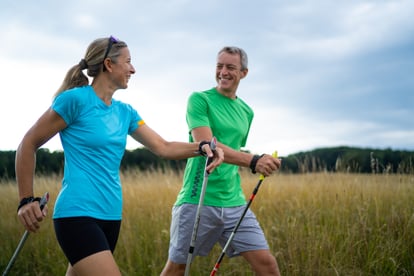 Unless you have been on Mars for the last four or five decades, you have heard, read, and seen the benefits of walking for health and fitness. There is no new hot take on walking; it’s always been a fantastic way to stay healthy and enjoy exercise.
Unless you have been on Mars for the last four or five decades, you have heard, read, and seen the benefits of walking for health and fitness. There is no new hot take on walking; it’s always been a fantastic way to stay healthy and enjoy exercise.
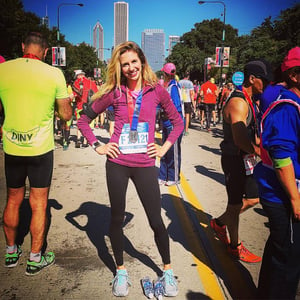 In 2014, I moved to NYC where I was going to pursue my passion for fitness in the fitness capital of the world. I was surrounded by some of the top fitness professionals and eager to learn more and more every day. In addition to this new lifestyle also came new stress. I turned to running again, and in one of the best parks you can run in, NYC’s Central Park. Weekends were filled with seeing long-distance endurance athletes racing. Novembers were filled with spectating one of the biggest marathons in the U.S. right outside my Upper East Side apartment: the New York City Marathon. I was inspired! In addition to my running solo, I also began taking classes at Barry’s Bootcamp from top trainers, including Nike Trainer
In 2014, I moved to NYC where I was going to pursue my passion for fitness in the fitness capital of the world. I was surrounded by some of the top fitness professionals and eager to learn more and more every day. In addition to this new lifestyle also came new stress. I turned to running again, and in one of the best parks you can run in, NYC’s Central Park. Weekends were filled with seeing long-distance endurance athletes racing. Novembers were filled with spectating one of the biggest marathons in the U.S. right outside my Upper East Side apartment: the New York City Marathon. I was inspired! In addition to my running solo, I also began taking classes at Barry’s Bootcamp from top trainers, including Nike Trainer 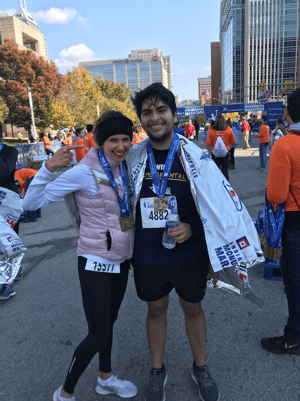 On August 15, 2018, I took on the role of coach for the
On August 15, 2018, I took on the role of coach for the  Interested in training for the Mini? NIFS Mini Marathon & 5K training program registration is now open!
Interested in training for the Mini? NIFS Mini Marathon & 5K training program registration is now open!
 There are so many diets out there that it can be confusing as to what you should follow and who you should listen to when it comes to healthy and balanced eating. If you aren’t sure where to begin to change your current routine, take a look at these tips that Registered Dietitians (the experts in healthy habits) recommend.
There are so many diets out there that it can be confusing as to what you should follow and who you should listen to when it comes to healthy and balanced eating. If you aren’t sure where to begin to change your current routine, take a look at these tips that Registered Dietitians (the experts in healthy habits) recommend. Running a marathon can be a very
Running a marathon can be a very 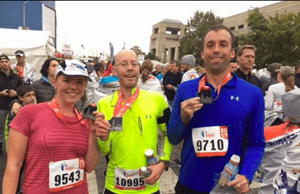 NIFS Fall Marathon Training Program
NIFS Fall Marathon Training Program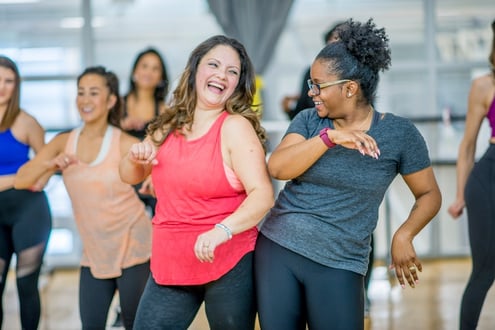 “You've got this!” "Keep it up!” “So strong!”
“You've got this!” "Keep it up!” “So strong!”